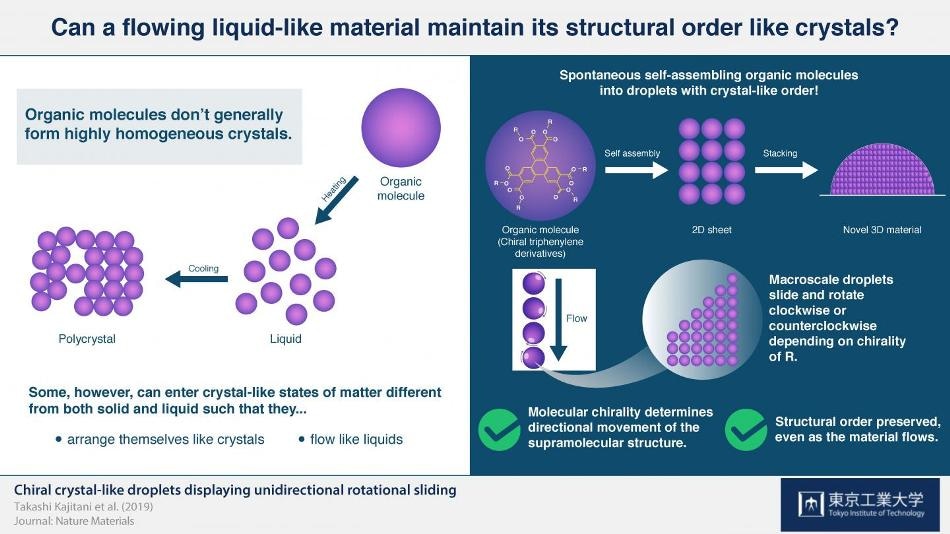Feb 20 2019
The study of the crystalline structures of organic materials has led to great progress not only in the scientific understanding of the material world but also in technology. Lately, a team of researchers from Tokyo Tech, which includes Professor Takanori Fukushima, prepared a new organic material with extraordinary and amazing properties.
 Chiral crystal-like droplets displaying unidirectional rotational sliding. (Image credit: Tokyo Tech)
Chiral crystal-like droplets displaying unidirectional rotational sliding. (Image credit: Tokyo Tech)
They synthesized a chiral triphenylene derivative, which had two enantiomers whose structures were mirror images of each other, just how left hand is the mirror image of the right hand. On heating this chiral compound followed by cooling, its enantiomer initially behaved like a liquid. Later, it self-assembled into a higher-order structure, showing unforeseen results. The research team used X-ray diffraction techniques to find that the chiral compound spontaneously formed two-dimensional sheets (which appeared like herringbone fabric) that later arranged themselves into a periodic three-dimensional structure of an ordered crystal.
When droplets are placed on a vertical substrate and allowed to slide under the influence of gravity, the ordered structure is preserved as they slide and rotate, which is the most astonishing feature of this chiral compound. Although the reason for this unanticipated behavior is yet to be revealed completely, as this novel material has crystal-like and liquid-like properties, it might have the ability to self-restore its structural order while sliding. The researchers also found that the chirality of the compound used governs whether the rotating–sliding motion is clockwise or counterclockwise.
The fact that this macroscopic movement of the droplets can be controlled by the small point chirality incorporated into the side chains of the molecules is surprising.
Takanori Fukushima, Professor, Tokyo Tech.
There is a high demand for materials that are capable of preserving their structural properties at a wide range since they find potential applications in fields such as optics and electronics.
The interesting behavior of our molecular assembly extends our fundamental understanding of the structure formation, motility, and phase of soft materials.
Takanori Fukushima, Professor, Tokyo Tech.
These intriguing and inspiring study outcomes will help scientists to explain the properties of organic materials, thereby offering in-depth insights into the structural order in soft materials, as well as resulting in significant advances in nanoscale technologies.